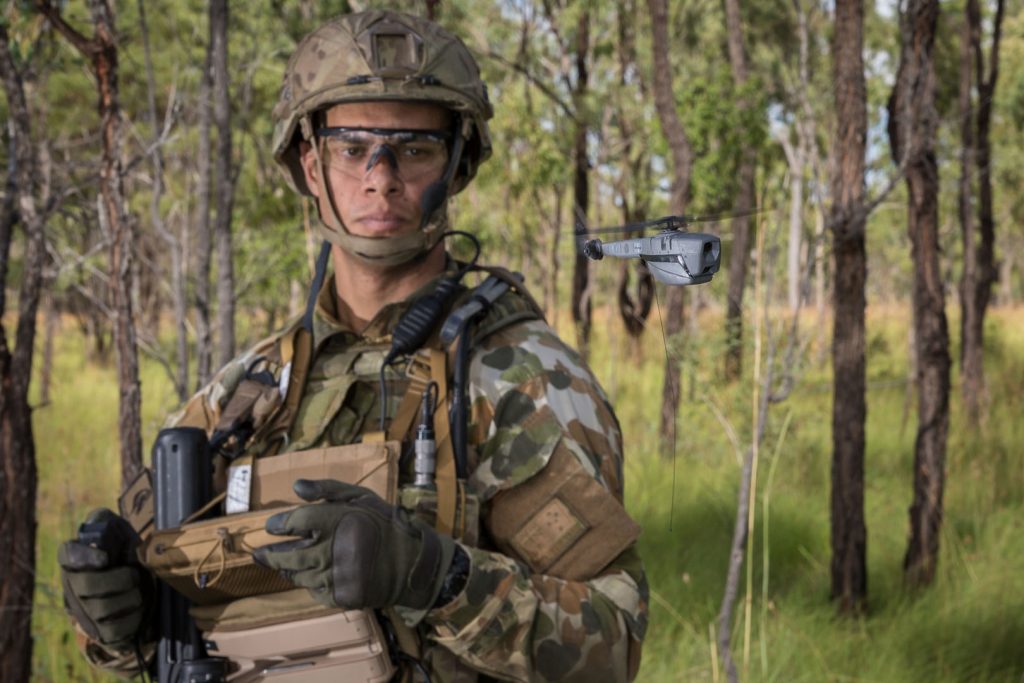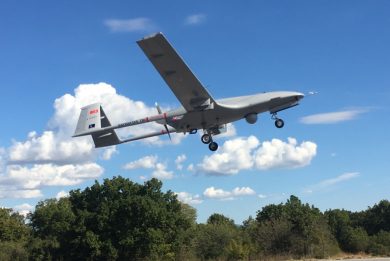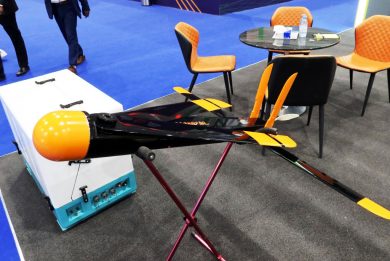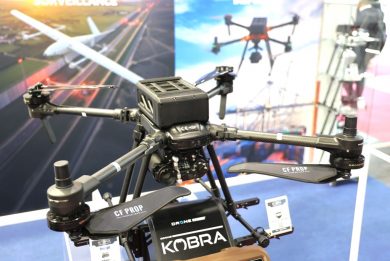
Black Hornet 3 on the rise
Seen for the first time at a European defence exhibition was FLIR Systems Black Hornet 3 nano-unmanned aerial vehicle (UAV) for use by global militaries, government agencies, and first responders. The Black Hornet Personal Reconnaissance System (PRS) is already the world’s smallest combat-proven nano-Unmanned Aerial System (UAS), and FLIR’s next generation Black Hornet 3 adds the ability to navigate in GPS-denied environments, enabling the warfighter to maintain situational awareness, threat detection, and surveillance no matter where the mission takes them.
The Black Hornet PRS has been fielded by over 30 nations over the past seven years and continues to represent the cutting-edge in the combat nano-UAS space, enabling small combat units, SWAT teams, and first responders with immediately available intelligence, target-acquisition, and reconnaissance capability. At less than 33 grams, the Black Hornet 3 offers the lowest size, weight, and performance for a UAS available. Offering improved speed and distance compared to previous versions, the Black Hornet 3 is wind tolerant up to gusts of 20 knots, can fly two kilometers at speeds of over 21 km/h and has an endurance of 25 minutes. It also incorporates sharper imaging processing featuring the FLIR Lepton thermal micro-camera core and a visible sensor to allow greater image fidelity. Both the payload and battery are replaceable. The design also features an improved encrypted military-approved digital datalink, enabling seamless communications and imagery significantly beyond line-of-sight (BLOS) and in closed areas.
Additionally, the Black Hornet 3 seamlessly integrates into the Android Tactical Assault Kit (ATAK) utilised by the military to provide battlefield networks and distribution of information to anyone on the network. Its extremely low visual and audible signatures allow covert operation and increased security for dismounted soldiers. It can operate almost anywhere and at anytime without prior airspace co-ordination.
In May, FLIR announced it had been awarded a $2.6 million order from the United States Army’s Soldier Borne Sensor (SBS) program to deliver the Black Hornet in a first batch order. Units delivered for the SBS program, in addition to units recently deployed by the Royal Australian Army and French Armed Forces, will be the Black Hornet 3.
It is being involved in trials during exercises by the British Army units.
The 1.3 kg Black Hornet 3 system includes two UAV sensors, a controller, and display, and it is sold directly through FLIR, being available to military, government agencies and law enforcement customers.



